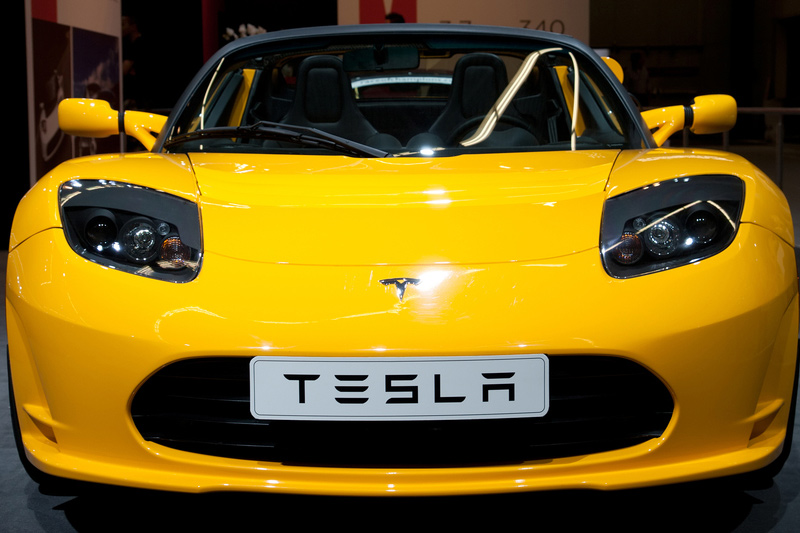NVDA’s Blackwell Delay: Is It Time to Switch to AMD?

NVIDIA Corporation (NVDA)AI’s darling has been going through a rough time lately. report The Information reported that Nvidia’s much-anticipated Blackwell series of chips were delayed due to a design flaw, causing the stock to plunge 15% last week. Despite the plunge, the stock is still up more than 170% over the past year, but as we know, past performance does not guarantee future returns.
So what’s going on with Nvidia? And more importantly, is it time to consider alternatives?
A Dark Cloud Gathers Over Nvidia’s Future
In March, NVDA announced the Blackwell series, which boasted the ability to build and run real-time generative AI on large-scale language models with trillions of parameters at a fraction of the cost and energy consumption of previous models. But as the months passed, things were not so bright.
According to the report, the company has notified major customers, including tech giants such as: Alphabet Corporation (GOOGL) and Microsoft Corporation (MSFT)Shipments of the Blackwell AI accelerator are reportedly being delayed by at least three months due to a design flaw. It appears to involve a new packaging technology from Taiwan Semiconductor Manufacturing, first used by NVDA, and an issue with the placement of the bridge die connecting the two GPUs.
This isn’t just a minor issue. This delay could derail the plans of customers like Microsoft. Meta Platform Corporation (META)Nvidia has invested billions of dollars in new GPUs to power its AI services. The concern is that the delay could prevent the companies from deploying large clusters of the new chips in their data centers until the first quarter of 2025.
Design flaws aren’t something that can be fixed overnight, which is why there has been such a significant delay. Nvidia hasn’t directly confirmed or denied the delay, but did say that “production is expected to begin in late 2024.” However, with only a few months left in the year, it’s more likely that it will be released in early 2025.
The delay has led tech companies to look to alternatives, including NVDA’s competitors. Advanced Micro Devices, Inc. (AMD)For example, MSFT and GOOGL already Next generation products under development With AMD.
While Nvidia still dominates the data center GPU market, the Blackwell delay could weigh on its stock and reputation. It’s arguably the biggest setback NVDA has faced since the AI boom began, and it could be AMD’s moment to shine.
The Future of Advanced Micro Devices
With a market cap of $3.18 trillion, NVDA’s growth prospects appear limited compared to AMD, which could double its value from its current $250 billion as it gains traction in the data center space.
AMD Data Center Sales in Q2 A 115% increase over the previous year It accounted for nearly half of the total revenue at $2.83 billion. The Mi300 series crossed $1 billion in quarterly revenue for the first time, and its customer base expanded as Microsoft became the first cloud provider to make the Instinct Mi300X generally available.
With AMD’s data center sales growing significantly due to AI applications, this segment is expected to further increase profits as it typically has higher margins. Also, the company’s recent Silo AI AcquisitionEurope’s largest private AI lab will strengthen its capabilities in generative AI, including inference, training, and large-scale language models.
Also, Advanced Micro Devices’ customer revenue was $1.49 billion, up 49% year over year, but margins were lower than its data center business. The recent decline in the gaming and embedded segments is likely to bottom out soon, potentially boosting overall results. Even a small gain could significantly boost AMD’s bottom line. The company reported net income of $265 million, or $0.16 per share, up from $27 million, or $0.20 per share, last year.
Investors want to see AMD. Challenging NVDA with the MI300X AI Chip And it shows growth in its data center AI business. Meanwhile, the Street expects revenue and EPS to grow 12.9% and 27.6% year-over-year this year (ending December 2024), to $25.62 billion and $3.38 billion, respectively. If AMD can beat expectations, its stock could see significant upside in the coming months. Earlier this year, the company said it Estimated $4 billion AI chip sales will account for about 15% of projected revenue in 2024.
Is it time to ditch NVDA and buy AMD?
The Blackwell chip delay could impact NVDA’s market share and growth. If the delay is short, the stock could see minimal impact on its fiscal 2025 results. However, if the delay exceeds three months, it could weigh heavily on the stock, especially since some analysts were expecting a quicker resolution.
Additionally, concerns about whether the design flaw could cause chip failures or affect production yields add to the uncertainty. Nvidia’s decision to halt production and fix the problem is a wise one, but it highlights the risks of an aggressive development schedule that has been compressed from two years to one. While this strategy may work, it also increases the risk of errors or delays.
AMD, on the other hand, is well positioned to benefit from the ongoing NVDA headwind. As its MI300X AI chip gains traction and data centers grow strongly, Advanced Micro Devices could take some market share from Nvidia. Given this backdrop, it may be a good time to consider switching from NVDA to AMD, especially for investors looking to capitalize on AI-driven growth in the semiconductor sector.



